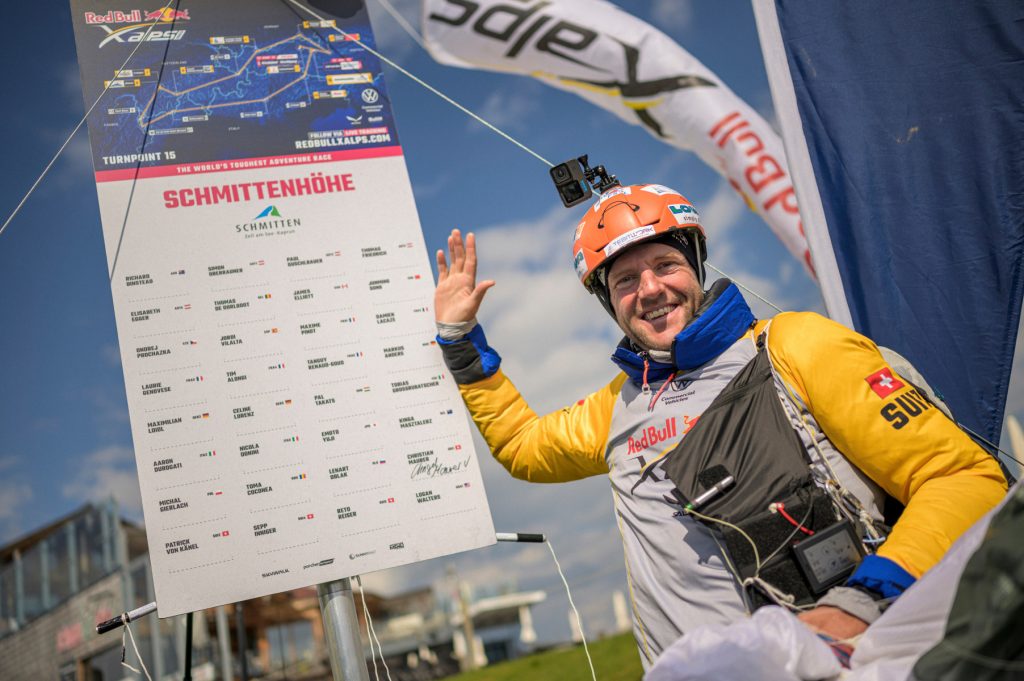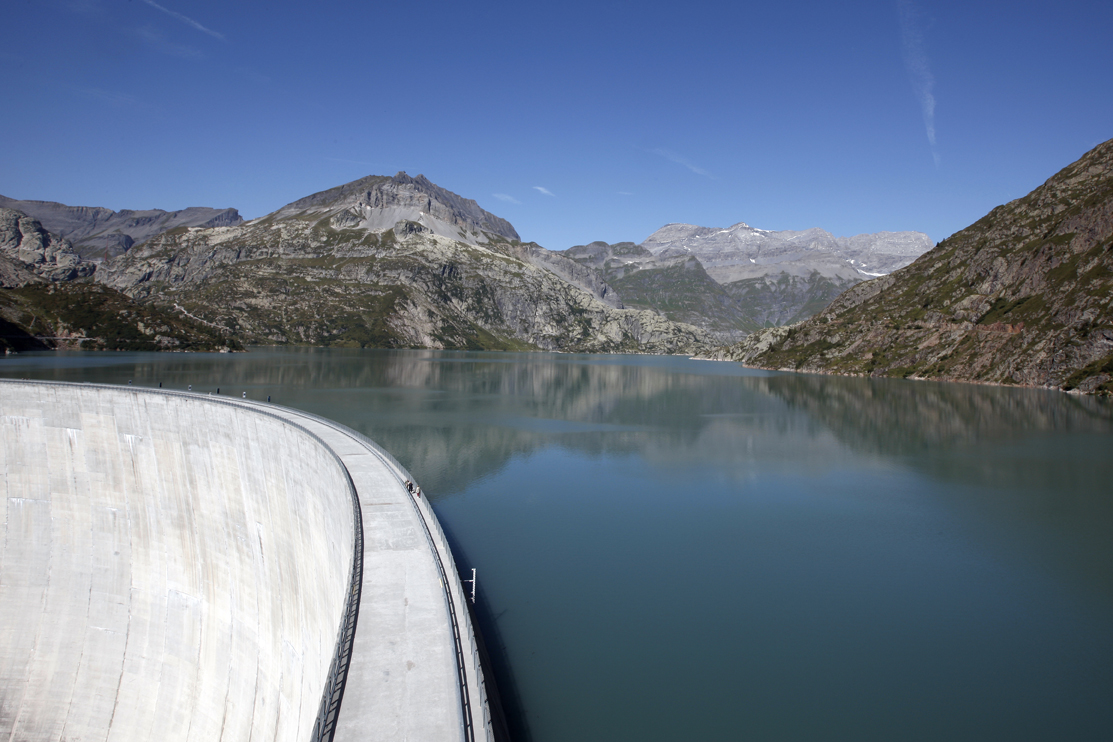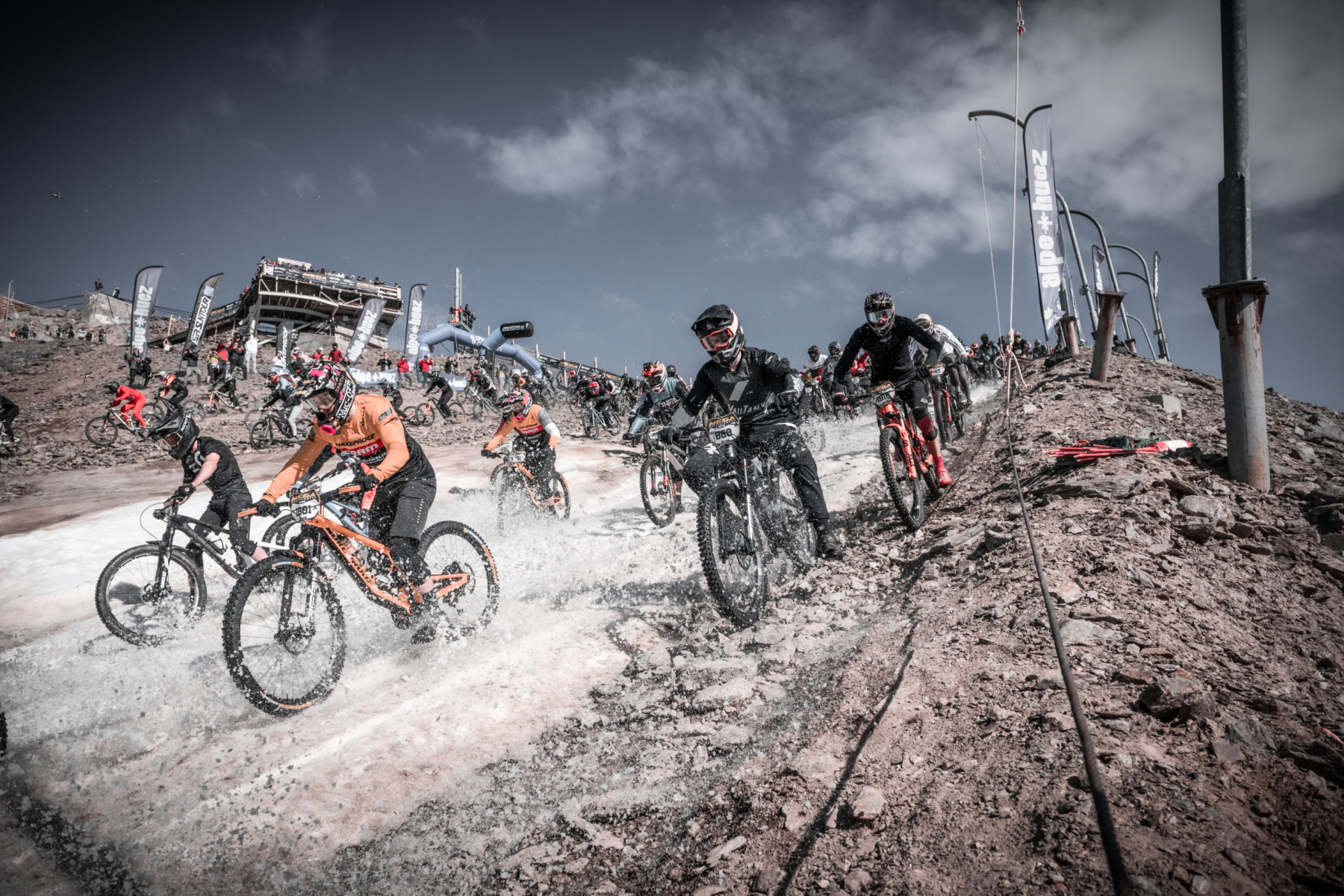Patrick von Känel (SUI2) flies during the Red Bull X-Alps in Italy on June 17, 2023. // Adi Geisegger / Red Bull Content Pool
Flying and hiking over 1,000 km across the Alps
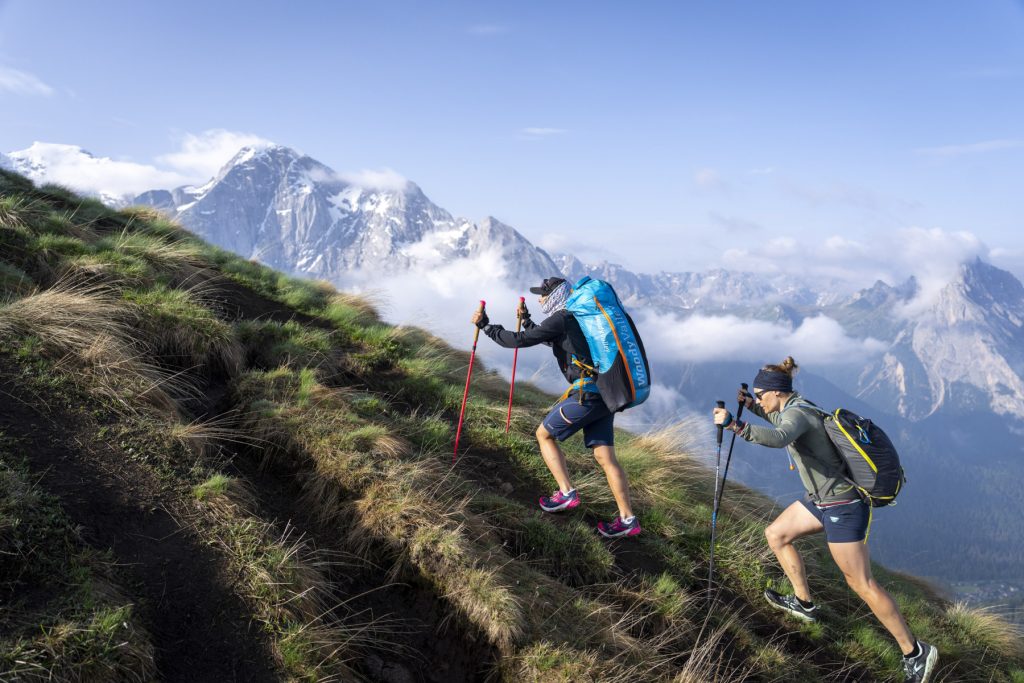
The Red Bull X-Alps is one of the world’s toughest adventure races that is a formidable undertaking in the most breath taking but unforgiving environments. The elite competitors entering the race, must either fly or hike over 1,000 km across the Alps in the fastest time possible. Every kilometre must be covered either on foot or flown using a paraglider. The event has teams consisting of one athlete and up to two supporters. The assistants can provide information, food and equipment and act as a link to the race control, but no technical or outside assistance is allowed. It requires expert paragliding experience combined with a very high level of endurance fitness as competitors can end up hiking up to 100 km in a day. Each race has different predefined turn points to follow along the course.
The idea for the race was developed by the Austrian pilot Hannes Arch.
“Its simplicity is what makes it most appealing. We start in Salzburg and whoever arrives in Monaco first wins. That’s it. It’s about body and soul, not about hundreds of rules and regulations.”
His idea was that when conditions are good, athletes fly, and when they are not they must run or hike, carrying their paraglider and other mandatory safety equipment. No other form of transport is permitted. The first race took the athletes from the Dachstein glacier in Austria to Monaco with only two defined turn points that had to be taken within a radius of 100 meters. Incredibly, it only took about 7 days for the winner to reach Monaco in 2013, but the race can last up to 12 days. The competition stops 48 hours after the winner touches down at the finish line and the other competitors are then ranked according to their distance from the finish.
In 2011, a new rule that did not allow travel at night was introduced for safety reasons. Between 22:30 and 05:00 the athletes are forced to have a mandatory rest and stay within a radius of 250 m of their resting position, however for one night of the race they can have a ‘Night Pass’ which allows them to hike through the night once during the race.
“The idea behind the Night Pass is to allow athletes a chance to advance their position by tactical means. They may be able to hike to a key point where they can extend their lead or pass teams in front. But the price is a missed night of recovery. And they can only do this once.
A paraglider, harness, rescue parachute, helmet, emergency flare, reflector belt and tracking device must be carried at all times.
At the very first Red Bull X-Alps in 2003, the participants used off-the-shelf paragliders that, along with the rest of their minimum equipment, weighed 20 kg. Now the equipment is down to more like 8 kg with the flying harness doubling up as a backpack and which can be packed up with their paraglider upon landing in less than four minutes.
The development of lighter, nonporous materials and the growing popularity of the event meant that the paraglider manufacturers have had an incentive to produce better, more portable equipment that could be shown off to the flying world every two years at the Red Bull X-Alps.
Paragliders have evolved hugely over the years. Primarily the amount of lines connecting the harness and pilot to the wing have been reduced massively cutting down the amount of weight and reduces the glider’s drag as it cuts through the air to making the glide and speed more efficient. Compared with the very first paragliders the lines of these modern competition gliders are thinner by more than 75% and made from lighter stronger materials that are only about 2 mm in width and made with Kevlar.
The paragliders are now much more blade-shaped with an impressive glide ratio (the distance forwards that a glider travels in still air compared to the distance it drops downwards during that period) and are faster, they must still be safe and hardy flying machines. The gliders have to perform in very tough conditions during the Red Bull X-Alps, which includes the extreme take-off places and in strong air turbulence .
The Red Bull X-Alps will be won by the athlete with the best overall strategy, fitness tactics and skill but the most advanced equipment is also vital just to stay on a level with the pack. A lightweight glider is essential on foot, but it must perform in the air too.
All competitors are required to carry a Pieps Globalfinder for safety reasons. Using GPS technology the athletes can be followed in real time via Live-Tracking by the organisers and Red Bull X-Alps fans. The exact position of the athletes is monitored via data loggers and cell phones so their live positions and traces can be viewed on the official website.
The format for Red Bull X-Alps was updated for the 10th edition of the race in 2021. The organizers created an out-and-back route from Salzburg to Mont Blanc and back to Zell am See via 12 Turnpoints in five countries. At 1,238 km, it was the longest route in the race’s history, Athletes race from 05:00 until 22:00 but they can only fly during daylight hours between 06:00 to 21:00. Overnight, a mandatory rest period is in place and athletes cannot move from their location. However, each athlete is equipped with a Night Pass, which allows them to break the curfew once. This can help to gain a strategic advantage, but it comes at the cost of additional fatigue. From day four and every 48 hours thereafter, the athlete in last place is eliminated.
The lineup of the Red Bull X-Alps is always a global mix of veterans and rookies and recently, between male and female athletes. The last seven editions have been won by the Swiss athlete Christian Maurer or ‘Chrigel the Eagle’ as he has become known to the race’s legion of fans and followers. In the early years his victories were conclusive and unchallenged, but with every edition, the competition gets a bit closer. Rookies have stood on the podium in every year of the race and today Maurer finds himself threatened as never before by a number of athletes capable of outperforming him in the air and on the ground. With the sheer number of variables, from the weather to route decisions, the Red Bull X-Alps is a race where anything can – and frequently does happen. Toma Coconea is the only athlete to have competed in every edition since 2003. Every athlete has an official supporter to provide strategic help, weather and route advice, and physical and psychological care, making this truly a team race.
The next Red Bull X-Alps is scheduled for 2025
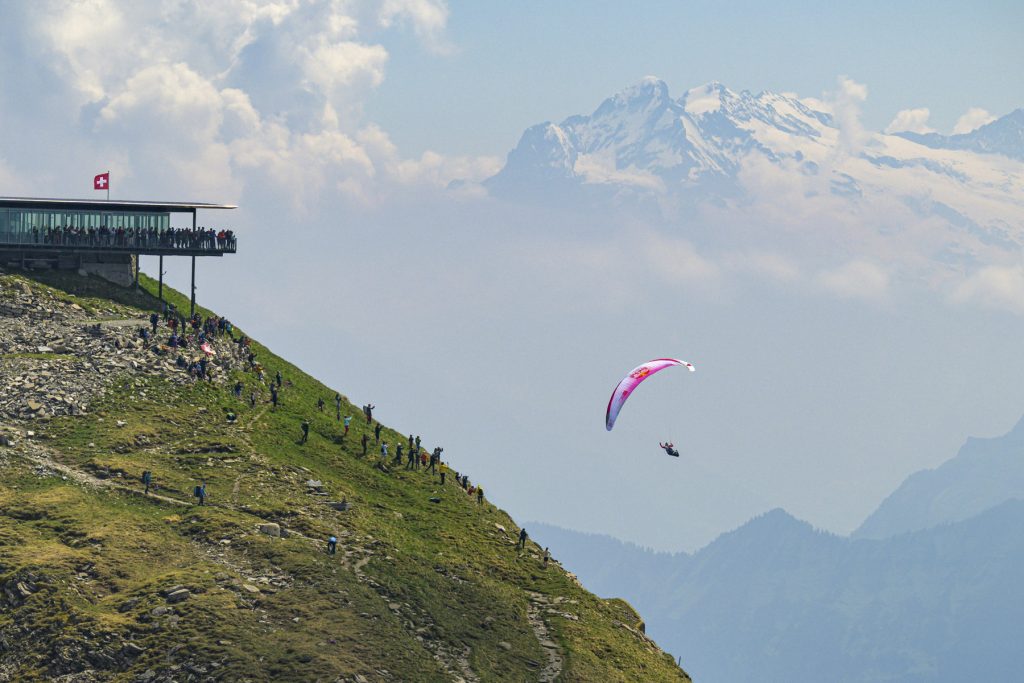
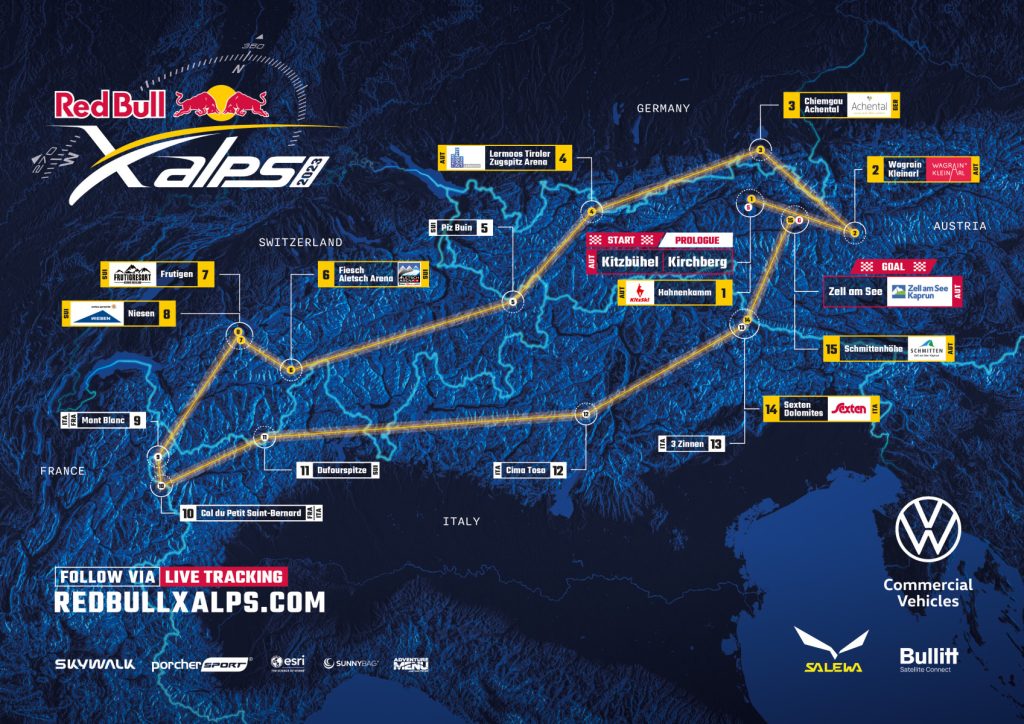
Red Bull X-Alps 2023: A Race to Remember
The 10th edition of the Red Bull X-Alps was a race to remember, as it celebrated the 20th anniversary of the event and featured some of the most exciting and dramatic moments in its history.
The race started on June 11th, 2023, with a prologue in Kitzbuhel, Austria, where the athletes competed for bonus points and favourable starting positions. The prologue was won by Damien Lacaze from France, who earned an extra night pass and a five-minute head start for the main race.
The main race began on June 12th, 2023, with a route that included 13 turn points across six countries: Austria, Germany, Italy, Switzerland, and France. The total distance was around 1,200 km, but the athletes had to fly or hike much more than that due to the terrain and weather conditions.
The race was dominated by Christian Maurer from Switzerland, who claimed his seventh victory in a row and broke his own record by finishing the race in just six days and six hours. The second place went to Damien Lacaze from France, who put up a strong fight and was only 12 hours behind Maurer. He reached Peille on June 18th, to claim his first podium finish in his third participation.
The third place went to Maxime Pinot from France, who also had an impressive performance and was only a few hours behind Lacaze.
Seventeen of the racers finished within 24 hours of the winner,
The endurance event also featured the first finish for a woman pilot, Austria’s Elisabeth Egger finishing in 10 days and 5 hours.
“2023 WILL GO DOWN IN HISTORY AS A YEAR OF RECORDS,” SAYS RACE ANALYST AND FORMER ATHLETE TOM PAYNE. “THE FASTEST, AND CLOSEST RACING BETWEEN THE ABSOLUTE BEST PILOTS IN THE WORLD, CULMINATING IN SEVENTEEN PILOTS ARRIVING WITHIN 24 HOURS OF OUR LEGENDARY CHAMPION. HISTORICAL FIRSTS LIKE THE FIRST WOMAN IN GOAL, AN INCREDIBLE PERFORMANCE BY ROOKIES AND VETERANS ALIKE, AND THE MOST ATHLETES EVER TO LAND ON THE FLOAT – AFTER THE LONGEST, AND MOST HARD-FOUGHT BATTLES. WITH THE 2023 EDITION, THE RACE HAS REACHED NEW LEVELS OF SPEED AND PROFESSIONALISM.”
1. SUI1 Christian Maurer 17.6.2023 17:31:51 6d 6h 1m 51s
2. FRA2 Damien Lacaze 18.6.2023 05:35:55 6d 18h 5m 55s
3. FRA1 Maxime Pinot 18.6.2023 06:17:54 6d 18h 47m 54s
4. HUN Pal Takats 18.6.2023 07:51:35 6d 20h 21m 35s
5. SUI2 Patrick von Känel 18.6.2023 08:21:58 6d 20h 51m 58s
6. AUT1 Simon Oberrauner 18.6.2023 09:04:19 6d 21h 34m 19s
7. FRA4 Tim Alongi 18.6.2023 09:22:10 6d 21h 52m 10s
8. ITA2 Aaron Durogati 18.6.2023 12:19:00 7d 0h 49m 0s
21. AUT4 Elisabeth Egger 21.6.2023 16:48:38 10d 5h 18m 38s
